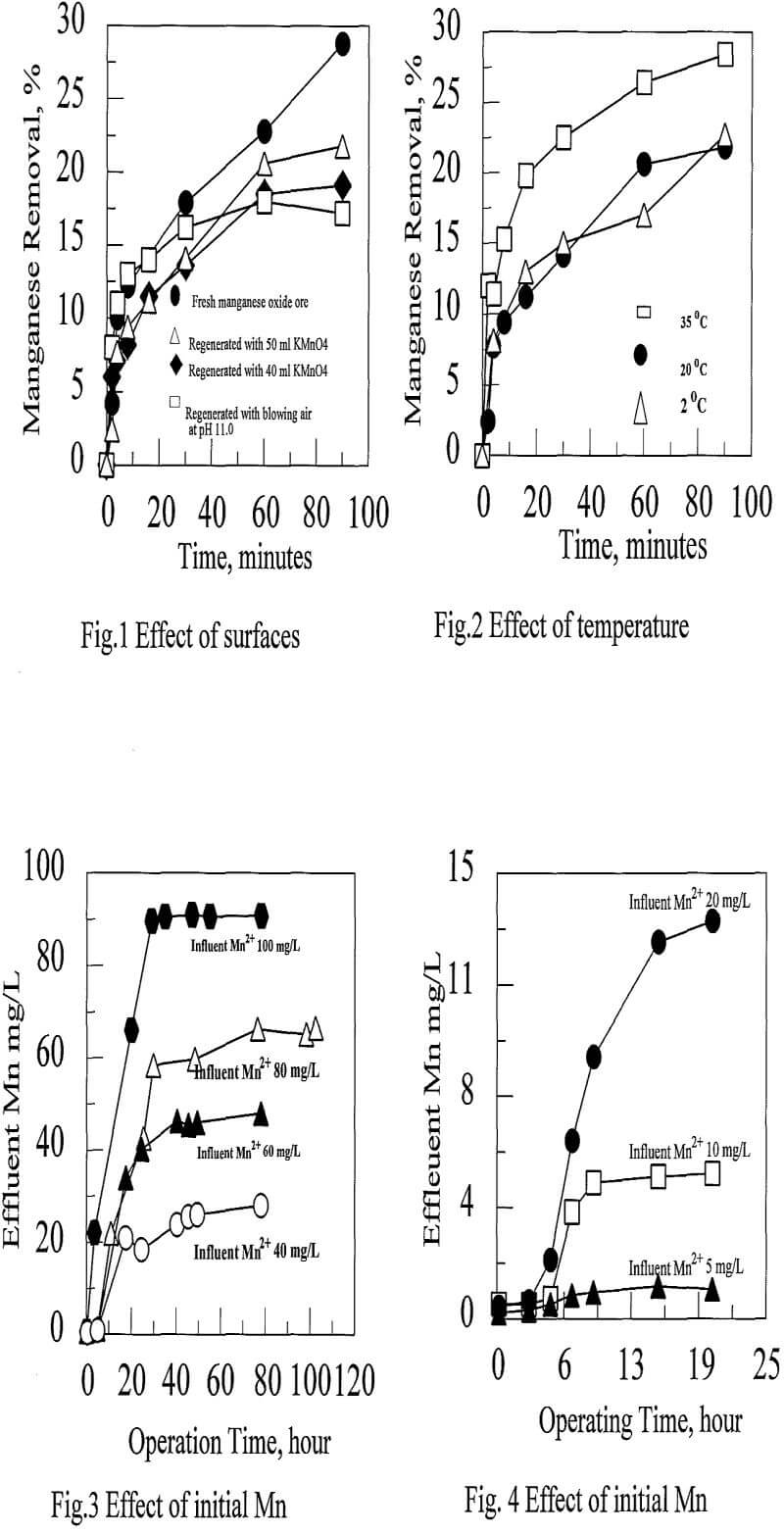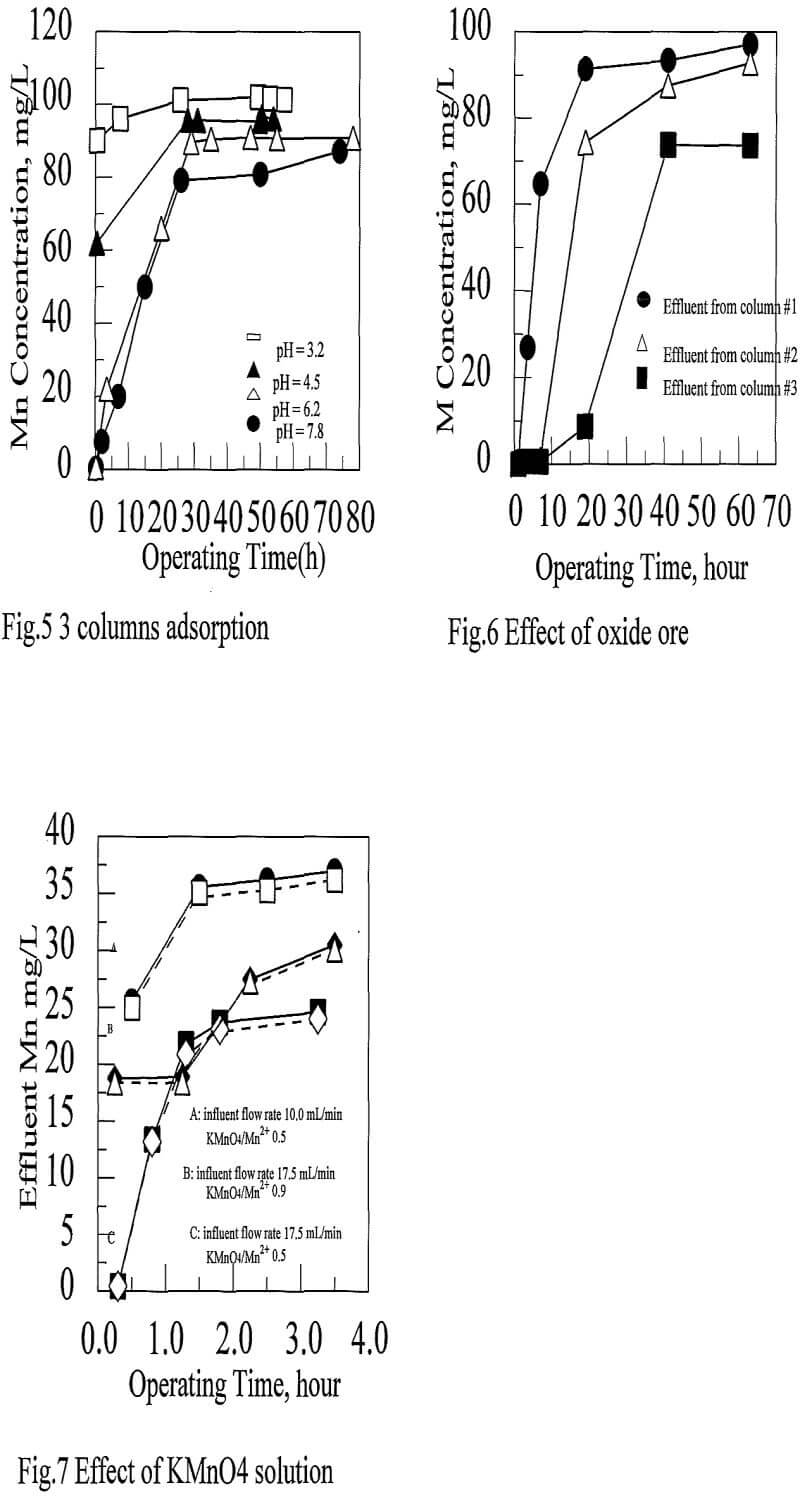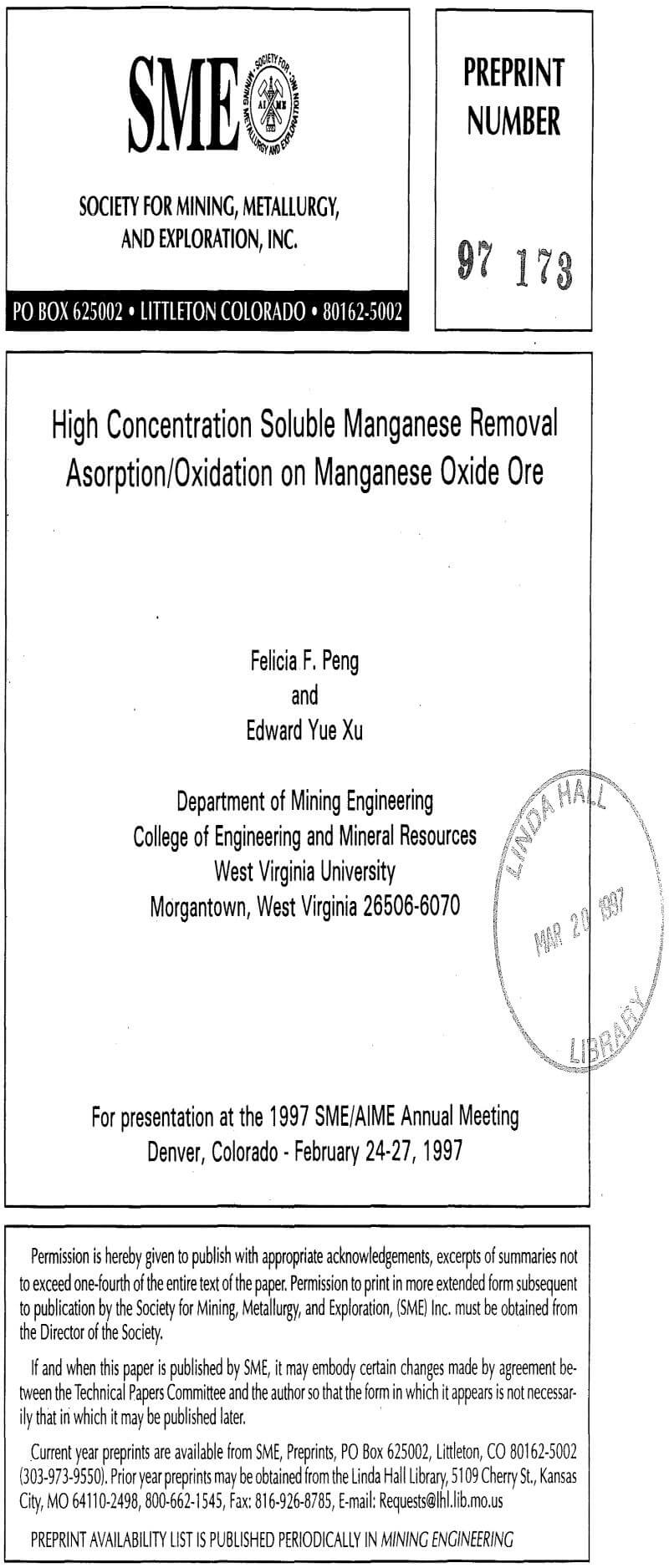The granular media used for the study of soluble manganese removal included natural manganese oxide ore. The manganese oxide ore of South Africa origin obtained from Elkem Company (Marietta, OH) was used as the medium for soluble manganese removal. The raw manganese oxide ore sample was crushed and ground into particles of 1.0-0.425 mm (-No. 18 + No.40 USA sieve). The composition of the ore is given in Table 1.

Morgantown tap water was used without further treatment for the preparation of influents for the fixed bed column tests. All the other aqueous solutions were prepared using reagent-grade chemicals and deionized water.
Adsorption Tests in a Batch Reactor
Adsorption was conducted in a one-liter glass batch reactor filled with 800 ml solution containing 100 mg/L manganese. A sample of 50 gram fresh or regenerated manganese ore particles was placed in the batch reactor and the stirring speed was set at 300 rpm. At regularly timed intervals about 5 ml aliquot were drawn from the reactor and filtered. A 1 ml portion of the filtrate was used for analysis of soluble manganese. The rest of the filtrate was added back to the reactor. The concentration of soluble manganese was measured by using a Perkin-Elmer Atomic Absorption Spectrophotometer, Model 2380 (Norwalk, CT).
Adsorption Study in a Fixed Bed Column
A synthesized feed water (influent) containing 100 mg/L Mn²+ (unless otherwise noted) was prepared by diluting manganous sulfate stock solution in tap water of Morgantown, WV. The solution pH was adjusted using 1 N sulfuric acid and/or 1 N sodium hydroxide.
The column system consisted of three identical, 3.1 cm ID and 92 cm long adsorption columns connected in parallel. Each one was charged with 265 g manganese ore sample having size range of 100-170 µm. The depth of the medium bed was 61 cm and the porosity of the bed was in the range of 0.44 to 0.48.
When oxidants were used, the samples of effluent were filtered through 0.2 µm pore size ultrafilter (Fisher Scientific, PA) before being analyzed by AA. This was conducted in order to filter and separate the manganese oxide colloidal particles from the solution following the procedure suggested by Davies and Morgan (1988). The amount of manganese oxide in effluent was calculated by mass balance.
The results of experiments conducted in a one-liter reactor are illustrated in Figure 1. The adsorbents were natural manganese oxide ore and its regenerated forms. It can be seen that 17 to 30 percent of soluble manganese was removed in 90 minutes. Those values are converted to give the adsorption densities of 0.30 to 0.36 mg/g. Manganese removal by fresh manganese ore increased continuously and no equilibrium has been reached during the given adsorption time. The other three samples which represent regenerated manganese ores after adsorption, were nearly saturated after an hour. It appears that in spite of regeneration by potassium permanganate or air following adsorption, surfaces of the adsorbents have subjected to considerable reorganization and developed less active sites. As a result, the regenerated adsorbents had lower adsorption capacity than the fresh one.
The rate of Mn²+ adsorption on manganese oxide ore was studied in a 1000 ml batch reactor. Several hours were needed for the adsorption to reach its equilibrium. The time for 50 percent of the adsorption density was on the order of 7 minutes. These granular adsorbents were effectively regenerated by oxidation using KMnO4. The adsorption of Mn²+ on manganese ore was improved at higher temperature while it was not greatly affected by low temperature.
In a continuous column adsorption test, Mn²+ was efficiently removed by fresh manganese ore. Complete manganese removal was reached over the first 8 hours of adsorption. The fresh manganese ore showed adsorption properties as good as or better than the MnO2-coated granular media such as sand and anthracite. Pretreatment of manganese oxide ore by potassium permanganate further increased its adsorption efficiency but regenerated adsorbents after adsorption showed lower adsorption capacity.
Oxidation of Mn²+ by dissolved oxygen was found unimportant for manganese removal in column test. Adsorption was the predominated mechanism involved with manganese removal.
The effect of operating parameters were examined in the continuous column adsorption test. Adsorption increased with a decrease in influent Mn²+ concentration. Influent pH had strong effect on Mn²+ adsorption; adsorption increased with pH while adsorption was stopped and absorption occurred at pH 3.2.
The results have an important practical implication, that is, efficient manganese removal can be extended for desirable time simply by increasing the amount of adsorbents needed and no adjustment of pH is needed during the adsorption.



